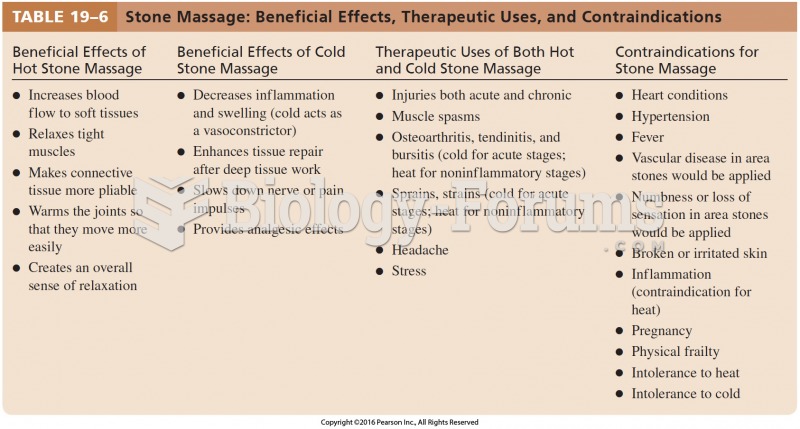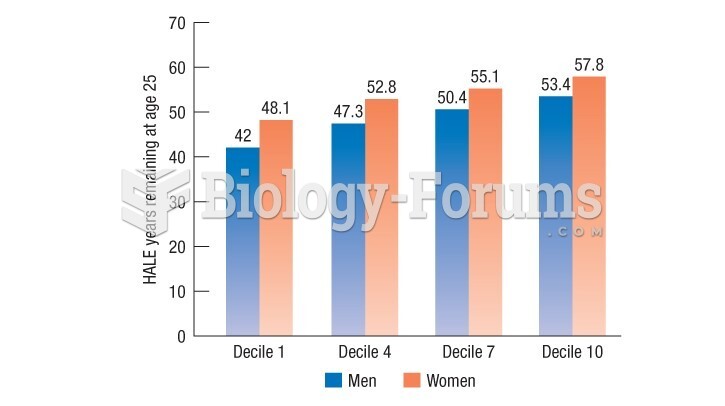Answer to Question 1
Unfortunately, an estimated 12 percent of pregnant women in the United States smoke. Smoking cigarettes and chewing tobacco at any time exert harmful effects, and pregnancy dramatically magnifies the hazards of these practices. Smoking restricts the blood supply to the growing fetus and thus limits oxygen and nutrient delivery and waste removal. A mother who smokes is more likely to have a complicated birth and a low-birthweight infant. Indeed, of all preventable causes of low birthweight in the United States, smoking is at the top of the list. Although most infants born to cigarette smokers are low birthweight, some are not, suggesting that the effect of smoking on birthweight also depends, in part, on genes involved in the metabolism of smoking toxins.
In addition to contributing to low birthweight, smoking interferes with heart and lung growth and arterial structure and function; consequently, it increases the risks of heart defects, poor lung function, respiratory infections, and childhood asthma. It can also cause death in an otherwise healthy fetus or newborn. A positive relationship exists between sudden infant death syndrome (SIDS) and both cigarette smoking during pregnancy and postnatal exposure to passive smoke. Smoking during pregnancy may reduce brain size and impair the intellectual and behavioral development of the child later in life.
Alternatives to smokingsuch as using snuff or chewing tobaccoare not safe during pregnancy. The safety and effectiveness of nicotine-replacement patches has not been determined, and therefore this therapy cannot be recommended at this time. Any woman who uses nicotine in any form and is considering pregnancy or who is already pregnant needs to quit. Avoiding secondhand smoke is also advised. Pregnant women exposed to secondhand smoke during pregnancy are more likely to experience complications such as stillbirth and the birth of an infant with congenital malformations.
Answer to Question 2
Preeclampsia is a condition characterized not only by gestational hypertension but also by protein in the urine. The cause of preeclampsia remains unclear, but it usually occurs with first pregnancies and most often after 20 weeks of gestation. Obesity may increase the risk. Symptoms typically regress within 2 days of delivery. Both men and women who were born of pregnancies complicated by preeclampsia are more likely to have a child born of a pregnancy complicated by preeclampsia, suggesting a genetic predisposition. They also tend to have a higher BMI and increased blood pressure during childhood and adolescence, indicating a greater risk for heart disease. Black women have a much greater risk of preeclampsia than white women.
Preeclampsia affects almost all of the mother's organsthe circulatory system, liver, kidneys, and brain. Blood flow through the vessels that supply oxygen and nutrients to the placenta diminishes. For this reason, preeclampsia often restricts fetal growth. It also seems to increase the risk of epilepsy for the infant. In some cases, the placenta separates from the uterus, resulting in preterm birth or stillbirth.
Preeclampsia can progress rapidly to eclampsiaa condition characterized by seizures and coma. Maternal death during pregnancy and childbirth is rare in developed countries, but when it does occur, eclampsia is a common cause. The rate of death for black women with eclampsia is more than four times the rate for white women.
Preeclampsia demands prompt medical attention. Treatment focuses on controlling blood pressure and preventing seizures. If preeclampsia develops early and is severe, induced labor or cesarean delivery may be necessary, regardless of gestational age. The infant will be preterm, with all of the associated problems, including poor lung development and special care needs. Several dietary factors have been studied, but none have proved beneficial in preventing preeclampsia.







